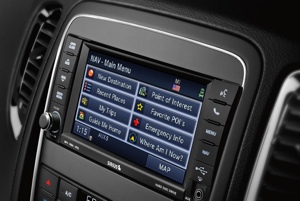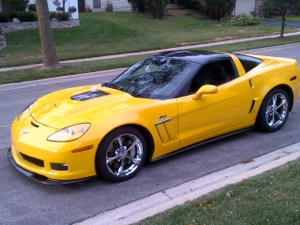Mike Colias
Automotive News — September 17, 2012 – 12:01 am E
DETROIT — General Motors has been cranking out pickups to stockpile them ahead of factory downtime this summer and fall, as it retools for the next-generation trucks due out by summer.
Now it’s crunch time. The company wants to whittle its four-month supply to less than three months by year end. The plan: GM is extending its semiannual truck month promotion, traditionally run in October, over two months and is throwing in big cash for both dealers and buyers.
But GM faces tough competition from rivals Ford, Ram and Toyota, which are clearing out their own 2012 pickups and aren’t in any mood to cede market share.
GM kicked off the promotion right after Labor Day and plans to run it through October. Dealers are trumpeting as much as $3,500 in customer cash — $4,500 for buyers who are trading in vehicles — on most 2012 Chevrolet Silverado and GMC Sierra models. And GM is dangling as much as $1,500 per pickup to dealers who can blow past their sales target for both 2012 and 2013 pickups under a GM stair-step program.
The sales push is one step in a complex marketing maneuver. GM’s next-generation pickups, on an all-new platform, are slated for release by late spring as 2014s.
GM had to overbuild its inventory of both 2012 and 2013 models ahead of lost production time at three truck plants — in Flint, Mich.; Fort Wayne, Ind.; and Silao, Mexico. The retooling work has been done intermittently since early this year. Several more down weeks are scheduled for this fall. That left GM with a 122-day supply of Silverados and a 131-day supply of Sierras, or a combined 243,400 units, on Sept. 1. In September 2011, that number was 203,900.
Now it’s trying to chew through the excess.
“They’ve pulled forward truck month, so we get both September and October, and they’re putting a lot of cash on the hoods,” says Chris Haydocy, a Buick-GMC dealer in Columbus, Ohio, whose usual 90-day Sierra supply has crept over 100. “With a little participation from the client, I think we’ll be fine.”
Meanwhile, Ford Motor Co. is hitting the market with its annual F-series promotion in September and October. Chrysler Group is putting cash on the hood of the 2012 Ram ahead of next month’s arrival of the re-engineered 2013 Ram, and Toyota has comparable deals on the Tundra, last redesigned in early 2007.
GM’s rivals are well aware of GM’s lofty pickup inventory. And the threat of their counterattack has added urgency to GM’s sell-down.
“When I heard that Ford had announced their truck month [in September], I definitely felt it was the right thing to have also had [the same timing] in our plan,” says Alan Batey. The no-nonsense Brit and former Chevy sales boss made the call to start the sale in September in his current role as GM’s U.S. vice president of sales and service.
Cash on the hood
Ford is offering customers between $1,500 and $3,000 on the 2012 F-series pickup, depending on engine and trim level, according to AIS Rebates, an Ann Arbor, Mich., company that tracks industry incentives. Chrysler is offering up to $3,500 cash on many 2012 Rams. Through Oct. 1, Toyota is offering up to $3,500 cash back on certain 2012 Tundras.
GM has said it expects its pickup inventory to fall to 80 to 85 days by year end. The company expects pickup sales to get the usual seasonal lift through the fall, aided further by promising economic signs, particularly in the critical housing sector. Lost production time will whittle stocks further.
But GM is handicapped by having the oldest full-sized pickup on the market, introduced in late 2006, which could force it to dig deeper on incentives than its rivals.
“If you’re undecided in the truck market, the Silverado has a disadvantage because it’s gotten a bit stale,” says TrueCar.com analyst Jesse Toprak. “That means the only way to convince people is to sell the deal.”
Still, GM’s customer cash is not outsized compared with past promotions. Last September and October, GM’s consumer incentives were higher for its outgoing pickup models than they are now, AIS Rebates data show.
A GM retail planning calendar recently sent to dealers shows its truck month running through October, but Batey says it’s too early to say whether GM will run the promotion for a second month.
“It’s always competitive in trucks,” Batey says. “Truck months are something the public understands and they expect to see, so I think it will be competitive.”
Dealers’ dilemma
For months, Chevy and GMC dealers have been strategizing as GM pumps the pickups into the system. Some ordered a larger number of trucks than usual, worried that they would run thin when production was crimped from the plant downtime, which began early this year but kicked in especially this summer and fall.
Others ordered more cautiously, worried that they would have to pay extra floorplan interest on a glut now — and that they could be stuck with leftovers when the redesigned trucks arrive.
A Chevy dealer in a Western mountain state says he lost a gamble this spring and summer when he loaded up on trucks that now are piling up on his lots. He welcomes the extended promotional period to help move the excess.
On the other hand, Lynn Thompson, a Springfield, Mo., Buick-GMC dealer, says he was “a little worried” about his 2012 Sierra stocks but says sales improved enough in August to quell his concerns.
Thompson also believes he can hit the objective GM set for his Sierra sales under the dealer incentive that runs from Aug. 28 through Oct. 1.
Dealers who surpass their factory-set baseline target by up to 10 percent earn $100 per truck on a portion of those sales. Dealers who beat their sales targets by 10 to 20 percent get $750 per truck on a portion of the sales. Those who sell 20 to 50 percent more than their target get $1,500 on about half of their total pickup sales.
Thompson said his bogey is “very fair” compared with past target programs.
“We still have to get on our horse and ride,” he says. “But I think we can get there.”
You can reach Mike Colias at mcolias@crain.com.
Per Auto News on January 16, 2012 there were 69 days of supply of the Silverado. That is just over 2 months supply and pretty much optimum for trucks.
GM did not start pumping up full size truck production until later in 2012 to prepare for the coming changeover shut downs.
Report Abuse


